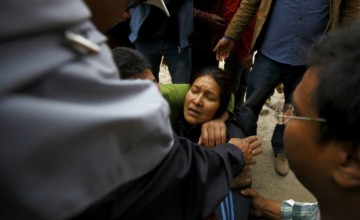
Read our 2023 annual report

Knowledge Hub
Earthquake in Nepal: our response

Saturday’s earthquake in Nepal and its devastating aftershocks have had a disastrous impact. At the time of writing, the deaths of 4,310 people have been confirmed while over 8,000 are injured – this already-horrific number is expected to climb in the coming days.
80 years
The earthquake affected almost half of the country’s districts, impacting its two largest cities, Kathmandu and Pokhara. This earthquake is the worst disaster Nepal has suffered in at least 80 years. The country ranks among the world’s poorest, with high rates of malnutrition and poor infrastructure. Over 8 million people have been affected by the earthquake, with 1.4 million people in need of food aid, according to the UN.
Concern's response
Concern CEO Dominic MacSorley said:
This is a huge tragedy for the people of Nepal.
We have deployed an emergency response team to Nepal and are preparing to respond with critical and life-saving interventions. We are currently shipping vital supplies to the country. Access to the worst affected areas is our priority, but given the terrain and the extensive damage, this will be a huge challenge.

Experience
Our experience of earthquakes of this magnitude, such as in Haiti five years ago, means we are preparing for the aftermath of the disaster. Some of the risks include:
- Displacement: currently, the nights are cold and wet in Nepal. Makeshift shelters are very basic and offer little protection. Heavier rains are predicted in the days to come. Over a million people were left homeless following the Haiti earthquake, meaning difficulties housing large numbers of displaced people in the long term securely
- Water and food scarcities: supplies of clean water are running out, which heightens the risk of waterborne diseases spreading. Hunger is a risk, particularly for the already vulnerable
- Overcrowded hospitals: hospitals and morgues are already stretched to capacity, slowing down medical services’ ability to tend to the injured and provide safe burials for the deceased
Follow Concern
Keep up to date with all of Concern's work and follow us on Instagram.
This site includes material which is copyright 2015 Reuters. All rights reserved. Republication or redistribution of Reuters content, including by framing or similar means, is prohibited without the prior written consent of Reuters. Reuters and the Reuters logo are registered trademarks. For additional information on Reuters photographic services, please visit the web site at http://pictures.reuters.com


